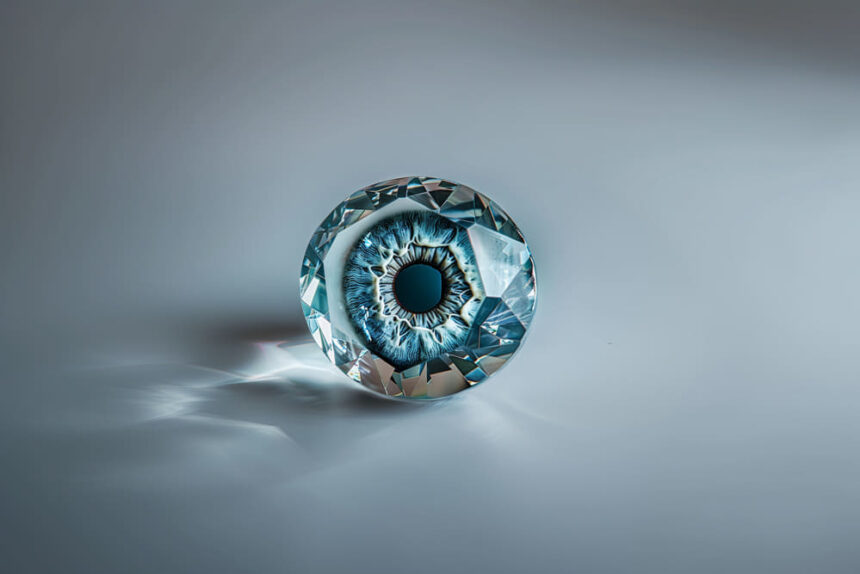The diamond industry is traditionally associated with jewellery and luxury, but in the last few decades, diamond materials have become critical in advanced technology applications, especially in the field of optics. Today, diamond-based optical components are revolutionizing industries due to their exceptional optical, mechanical, and thermal properties.
We’ll explore the role of optical components in the diamond industry, key advantages of using diamond in optics, major applications, and the future potential of diamond optics in various high-tech sectors.
1. What Are Optical Components in the Diamond Industry?
Optical components are elements used to transmit, reflect, focus, or modify light in optical systems. These include:
- Windows
- Lenses
- Mirrors
- Prisms
- Beam splitters
- Waveguides
In the diamond industry, optical components are manufactured using single-crystal or polycrystalline diamond due to their unmatched properties that outperform traditional optical materials like glass, quartz, and sapphire in extreme environments.
2. Why Diamond is Ideal for Optical Components
Diamond offers a unique combination of optical and physical properties that make it highly desirable for optical applications:
✅ Wide Transparency Range: Diamond transmits light from ultraviolet (UV) to far-infrared (IR) wavelengths (225 nm – 50 µm), making it suitable for broadband optical systems.
✅ Extreme Hardness: Diamond is the hardest known material, ensuring long-lasting durability in abrasive or high-stress environments.
✅ High Thermal Conductivity: With conductivity up to 2000 W/m·K, diamond effectively dissipates heat, preventing optical distortion.
✅ Low Absorption and High Refractive Index: Ensures high optical clarity and minimal signal loss.
✅ Chemical Resistance and Inertness: Suitable for use in harsh or corrosive environments without degradation.
3. Key Types of Diamond Optical Components
- a) Diamond Windows
- Used to protect sensors or optical systems while allowing light transmission.
- Common in high-power CO₂ lasers, thermal imaging, and spectroscopy.
- b) Diamond Lenses
- Designed for infrared focusing or collimating applications.
- Used in medical diagnostics, military optics, and space telescopes.
- c) Diamond Beam Splitters and Mirrors
- Suitable for high-energy laser systems where conventional coatings fail.
- Can withstand intense thermal and mechanical stress.
- d) Diamond Waveguides and Diffractive Optics
- Used in integrated photonics, quantum optics, and optical computing.
- Supports compact, on-chip optical systems.
4. Applications of Diamond Optical Components
- Laser Systems
- Diamond optics are key in high-power laser cutting, welding, and engraving systems.
- Their durability and thermal resistance ensure stable laser beam quality even under continuous high-energy use.
- Aerospace and Defense
- Diamond optical windows and lenses are used in missile seekers, infrared guidance systems, and space instruments.
- Their resistance to radiation and temperature extremes is essential in space and military settings.
- Medical Devices
- Used in laser scalpels, endoscopic imaging, and non-invasive diagnostic tools.
- Diamond optics offer bio-compatibility, sterilizability, and minimal wear.
- Spectroscopy and Sensing
- Diamond optical windows are widely used in FTIR (Fourier-transform infrared spectroscopy) and Raman spectroscopy.
- Ideal for chemical, pharmaceutical, and materials science research due to their transparency and chemical resistance.
- Quantum Technologies
- Diamonds with nitrogen-vacancy (NV) centers are used in quantum sensing and computing.
- Optical components made from diamond play a critical role in manipulating light for quantum signals.
5. Manufacturing Methods for Diamond Optical Components
The creation of high-precision diamond optics typically involves:
- CVD (Chemical Vapor Deposition)to grow synthetic diamond layers
- Polishing and shapingusing laser cutting or ion beam milling
- Surface treatmentsto improve optical transmission and reduce reflection
- Coating technologies(AR coatings) customized for UV, visible, or IR applications
Single-crystal CVD diamonds are preferred for high-end optics due to their superior clarity and uniformity.
6. Challenges in Using Diamond for Optical Components
✔ Cost: Diamond optics are more expensive than traditional materials due to complex manufacturing.
✔ Processing Difficulty: Diamond’s hardness makes precision machining challenging, requiring advanced fabrication tools.
✔ Limited Coating Compatibility: Applying AR coatings to diamond surfaces is complex due to its inert nature.
Despite these challenges, the performance advantages and longer lifespan of diamond optical components often justify the investment.
7. Future Trends in Diamond Optical Components
🔹 Miniaturized Diamond Optics for wearable technology and medical implants
🔹 Diamond Photonic Integrated Circuits (PICs) for optical computing and AI hardware
🔹 Quantum-Ready Optical Platforms using NV and SiV centers in diamonds
🔹 Flexible Optical Designs using thin-film diamond coatings
As manufacturing costs reduce and demand increases, diamond optics will become standard in next-gen technologies.
Conclusion
Optical components are a vital segment in the modern diamond industry, bridging the gap between luxury materials and leading-edge technology. From infrared windows and laser lenses to quantum sensors and waveguides, diamond’s optical excellence is unlocking new frontiers in science and industry.
When selecting optical components, diamond should be at the top of the list for applications requiring exceptional clarity, durability, and thermal performance.



